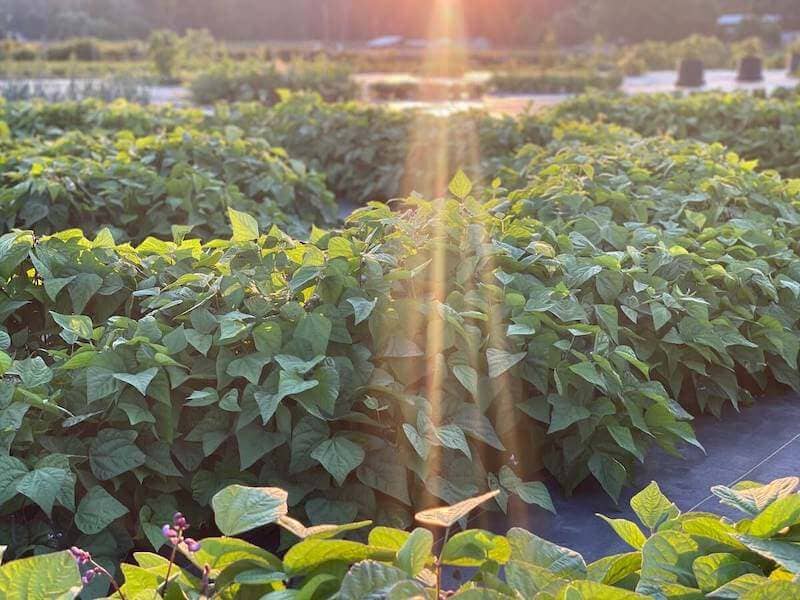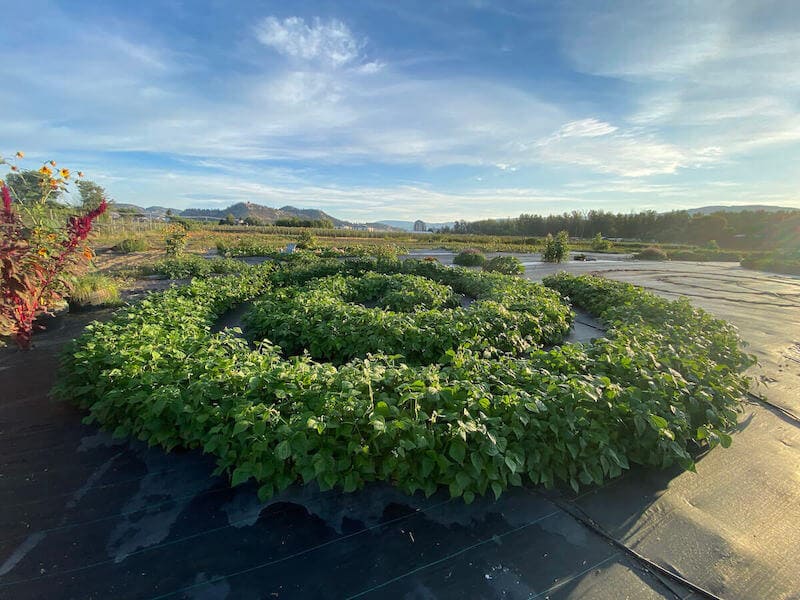
Nearly 80% of farmers worldwide grow food on less than an acre. Without economies of scale, smallholding farmers face significant challenges, struggling to survive or make a profit. In regions where land holdings are constitutionally small, improving food security requires innovative ways to grow more food on limited plots. Additionally, mountainous terrain further limits arable land suitable for agriculture.
Urban community gardens and farms face similar obstacles with restricted agricultural space. Many farms have disappeared due to urban development, leaving only small plots, often the size of a building lot, scattered throughout cities. For instance, Phoenix, Arizona, a sprawling metropolis in the Sonoran Desert, has over a million acres potentially available for agriculture, yet faces challenges with water use amid prolonged droughts in the Southwest United States.
Crop Circle Market Gardens ® address these challenges by doubling production per acre in small agricultural settings, making previously unprofitable spaces viable. This innovative approach provides a lifeline to small plot farmers striving for sustainability and offers solutions for island nations addressing food security. Crop Circle Market Gardens are also ideal for urban farmers, helping them grow enough food to turn a profit, feed their communities, and create jobs.

The innovative spiraled design of Crop Circle Market Gardens maximizes plant growth while minimizing essential resources such as water, fertilizer, land, and labor. A ground cover suppresses weed growth, reduces groundwater evaporation, and fosters subterranean ecosystems that improve soil health. Proprietary irrigators secured through the ground cover remain unaffected by wind and allow seeds or transplants to grow from their centers. These irrigators can be easily removed, fertilized, and reinstalled at the beginning of each season. Once installed, irrigation and fertilization are automated using timers. Crop rotation, with different plants grown each season, enhances soil quality over time. Crop Circle Market Gardens are typically mono-cropped to optimize yield efficiency.
Mono-cropping in market gardens focuses on cultivating one specific type of plant to maximize the yield of a particular vegetable, herb, or flower. By planting various varieties of the same cultivar, such as green, yellow, orange, and red bell peppers in one spiral, growers can achieve visual and market variety while maintaining efficiency.
Bush Beans – A Crop Circle Market Garden with 200 eight-inch alternately spaced openings arranged in 80-inch spiral loops can grow approximately 2,000 bean plants. With an average yield of 15 pods per plant and three harvests per season, the garden can produce 600 pounds or 42,000 pods. At a retail price of $5 per pound, total revenue could reach $3,000 per cycle. With 20% faster growth enabled by Crop Circle technology, two full harvests in a single season are possible, doubling potential revenue.
Bell Peppers – A Crop Circle Market Garden with 300 five-inch alternately spaced openings in 40-inch spiral loops can grow 300 pepper plants. With an average yield of 20 bell peppers per plant, this setup would produce approximately 6,000 bell peppers or 3,000 pounds. At a retail price of $3 per pound (typical for colored peppers), this configuration could generate $9,000 in revenue per season.
Swiss Chard – A market garden with 300 six-inch openings in 40-inch spiral loops supports 900 chard plants. With an average yield of 30 leaves per plant, the garden would produce about 27,000 leaves or 900 pounds of chard. At a retail price of $3 per pound, the revenue potential is $2,700 per season.
Kale – A market garden with 400 six-inch openings in 36-inch spiral loops grows 800 kale plants. Each plant yields an average of 30 leaves, resulting in a harvest of approximately 27,000 leaves or 900 pounds. At a retail price of $5 per pound, this garden could generate $4,500 in revenue each season.

In certain cases, planting multiple types of crops in a market garden can be highly beneficial, offering a versatile alternative to traditional rowed garden plots. A multi-cropped market garden features plants arranged along a Fibonacci spiral, which increases spacing between loops as they extend outward. This design is particularly effective for accommodating spreading plants like cucumbers, which thrive in the outer sections of the spiral.
Up to 30 different types of plants can be cultivated in a single market garden. Multi-cropping is especially advantageous for growers aiming to provide a diverse selection of vegetables, herbs, and flowers to their customers. Staggered planting schedules allow for crops to be harvested at different times throughout the season—for instance, harvesting greens early and peppers later. Instead of focusing on a single herb like basil, a variety of herbs such as borage, chives, cilantro, dill, echinacea, fennel, lavender, mint, oregano, parsley, rosemary, sage, and thyme can be cultivated and harvested continuously. Flowers, including aster, baby’s breath, black-eyed Susan, calendula, carnation, coneflower, cosmos, dahlia, daisy, delphinium, four-o-clock, foxglove, impatiens, lobelia, marigold, morning glory, nasturtium, pansy, petunia, poppy, snapdragon, verbena, and zinnia, can also be grown in abundance. Additionally, multi-crop market gardens are a fantastic interactive experience for children, providing a fun and educational environment to explore.
To prepare for planting, soil is removed from each opening to a depth of 8 inches using a miniature auger attached to a power drill. The holes are then filled with a mixture of fertilizer, aged plant matter, and animal compost before new seeds or transplants are introduced. For seeds, the hole is filled to the top, and seeds are spaced evenly on the surface of the mix before being covered with half an inch of compost. The seeds are watered thoroughly and left to germinate. Using a germination cloth over newly sown seeds significantly reduces germination time while protecting seedlings from birds and frost.
Join our partners at Growing To Give and New Leaf Technologies to combat hunger and promote sustainability with Crop Circle Market Gardens across the nation and around the globe.
Ready to transform your land into a high-yield, sustainable farm? Let Crop Circle Farms design and build a custom, low-impact, and water-efficient farm tailored to your needs. Double your income and cut your costs in half! Contact Us
Help us expand our mission to revolutionize agriculture globally. We are seeking partners to implement Crop Circle Farms to feed people in need. Together, we can build scalable food production systems that save water, reduce costs, and feed thousands of people. Contact Growing To Give